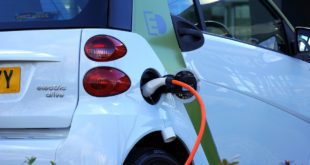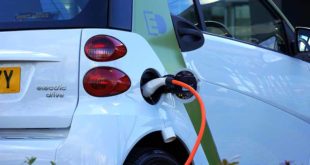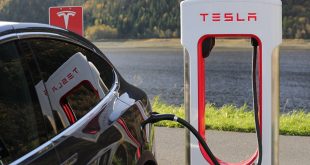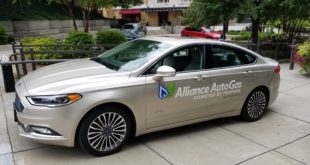10 years ago electric and hybrid cars would make people giggle at their very mention. Yet these prototypes were nothing short of the human brilliance paving the way for what is soon to become the future of road transport. Electric vehicles are not a fashion trend, they represent the next revolution in automobile technology. It’s not so hard to see why there is such a hype about electric cars. Here are some of the points:
Electric motors by design are much more efficient than Internal Combustion Engines (ICE). They achieve efficiencies of well over 90% compared to an average of 20% for ICE. This translates into greater economical incentive since electric motors average 6Km/Kwh (Kilometer per Kilowatt-hour of energy) compared to 2.5Km/Kwh for ICE running on petrol. Efficiency with ICE is a big problem as there is not much scope for improvement. You see, in physics the laws of thermodynamics come into play theoretically limiting the efficiency of these designs to about 40%.
Next is the fact that electric motors are able to deliver full torque at start up, that is at zero Revolutions Per Minute (RPM) which means you get much more power from the beginning itself. ICE however are different because they can only achieve their full torque within a certain range of RPM, which is why you have to shift gears when you’ve reached that optimal RPM range. Thus the Tesla roadster, a fully electric sports car can achieve 0-60mph in well under 4 seconds, and that’s with only about 250 horsepower (hp). For a similar performance with ICE cars, you would be looking at 500hp cars or more.
However the reason why you don’t see electric cars everywhere yet is because there are areas which have to be improved. Perhaps the greatest shortcoming of electric cars is its power source. Conventional ICE burn petrol which itself is very energy dense, meaning it contains a lot of energy, so to speak. As such the energy density of petrol is about 13Kwh/Kg (Kilowatt-hour per kilogram) or 8.9Kwh/L(Kilowatt-hour/Litre). Electric cars currently rely on lithium ion batteries with an energy density of 0.2Kwh/Kg with some of them even attaining 0.4Kwh/Kg. Still, however that is quite low.
All this translates into having to carry a heavy load of batteries so that these electric cars can have a reasonable range. The Tesla roadster for example recently managed to complete the 500km landmark on a single charge. With a 53Kwh battery pack which weighs almost a thousand pounds, that’s an efficiency of 9.5Km/Kwh!
The second problem with the battery technology is its charging time. On a home power outlet, a typical connection of 240 volts at 13 ampere (amp) would take over 17 hours to charge a 53Kwh battery pack. With its high power connector kit of 70amp though, this can fall down to 3 hours. Future models are expected to have a 45 minutes quick charge. A third problem is the life cycle of the batteries which have a limited charging cycle.
However you can expect these shortcomings to vanish in the future with investments in technologies such as lithium-air batteries with capacities of up to 5Kwh/Kg. Big companies such as IBM, Bosch and Panasonic are at the edge of the future battery technologies.
Convenience is another advantage when it comes to electric cars. In our society today, electricity is the universal form of energy. You can charge your car from so many outlets, at home, at charging stations, at work or even at the neighbors’ if you dare. No need to queue at petrol stations. The bonus is that electricity costs only 12 cents/Kwh so essentially you’re looking at a full charge for under $7. Compare that to filling up your fuel tank at about $40 or more.
Electric cars have zero emissions. They have no air intake or exhaust. It is true that the electricity used most likely comes from coal fired power plants but the problem is the way of generating electricity in general, which has other alternatives. So not only electric cars do not pollute the air, they also reduce noise pollution. They are so silent that some authorities are thinking of solutions to warn the visually impaired people who rely heavily on their hearing to move around.
A couple of weeks ago, I was watching a top gear episode where the presenters had taken their cars to the Andes and at that altitude engine performance dropped significantly since there was less oxygen in the air. I know it wouldn’t be fair if I mention such a situation as an advantage of the electric car, since realistically such situations rarely occur. But that surely points out that ICE need adequate levels of oxygen to function, electric cars don’t.
The technology of electric vehicles keeps on improving. For example, Michelin’s Active Wheel System, basically in wheel motors, are smaller electric motors found inside the wheels and each of them are able to generate power independently. This is true 4 x 4 power. They are relatively light about 42 Kg each eliminating the need for a heavy front engine, an empty space which can be use to improve safety for frontal impacts. The reduction in weight further increases safety in terms of braking distance.
Lastly with only a few moving parts with electric motors, maintenance is less of a problem since there is less wear and tear, not to mention clogs and fuel deposits that occur with typical ICE. Forget about those dreaded frequent oil changes. Forget about those black particles deposits under the bonnet.
There is a buzzing enthusiasm for electric vehicles not only from the consumer market but also from the manufacturers. The most successful car manufacturers know where the future lies, hence why Toyota’s best selling hybrid- Prius (over 2 million of them around) is making the headlines while General Motors have scheduled production of the Chevrolet Volt within a year from now. Nissan and Renault are expected to follow suit.
Analysts on the other hand estimate that by 2020 10% of all new sales will be electric doubling by 2030. However other experts such as Professor Kevin Morley, former Managing Director of Rover are more optimistic putting the market share of electric cars between 30-40% by 2020. I personally share his optimism, although to some people this figure might seem unrealistically high. So next time you see an electric car, just remember what you are actually looking at is simply a great piece of engineering and you can expect to see a lot of them in the near future.
 Alternative Energy HQ solar power for homes, wind energy, and bio fuel issues
Alternative Energy HQ solar power for homes, wind energy, and bio fuel issues







